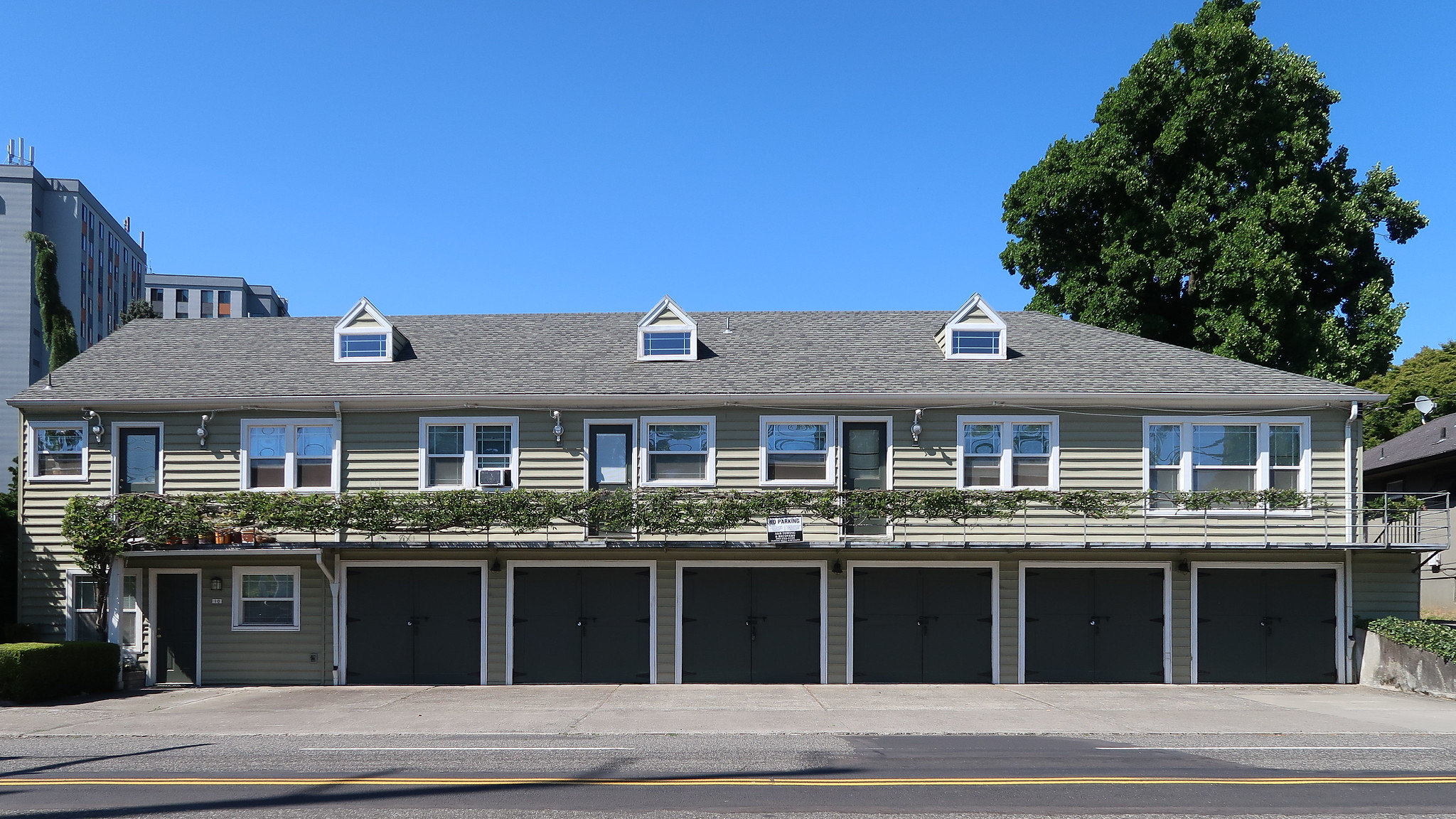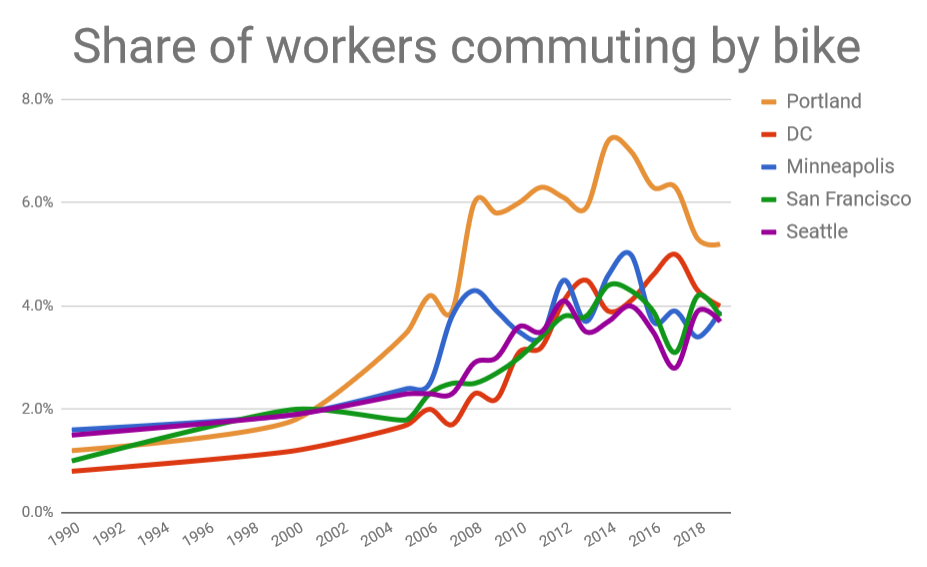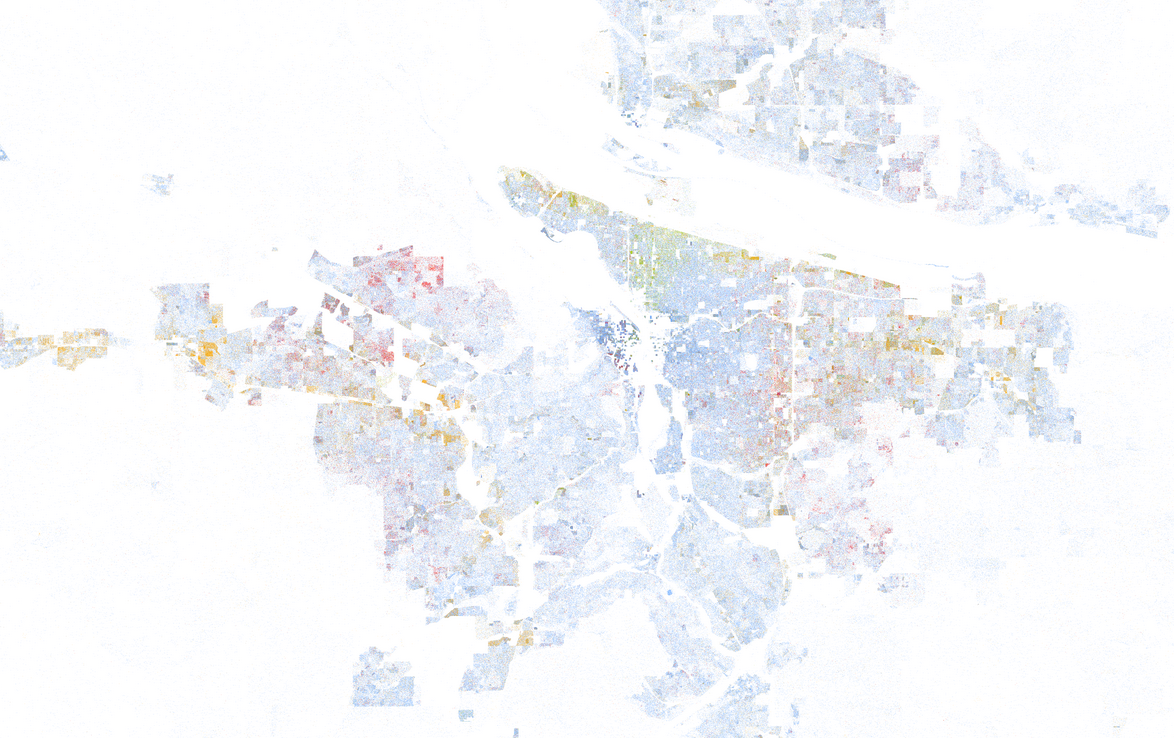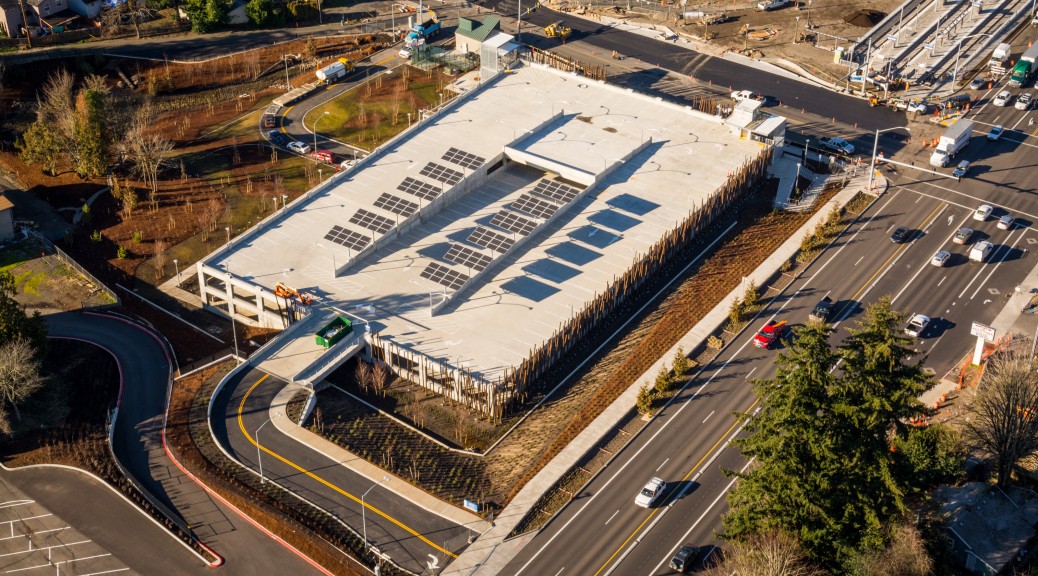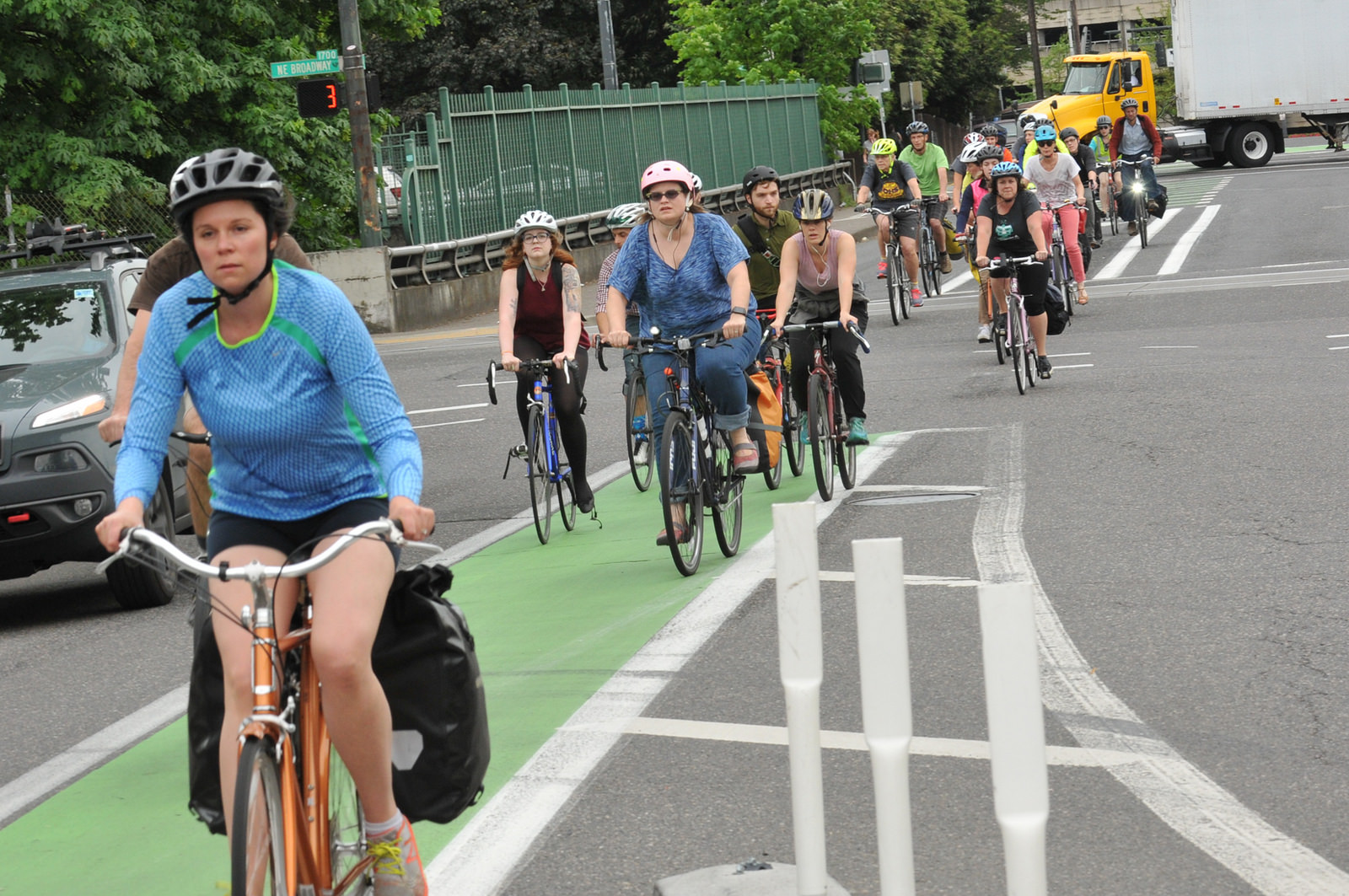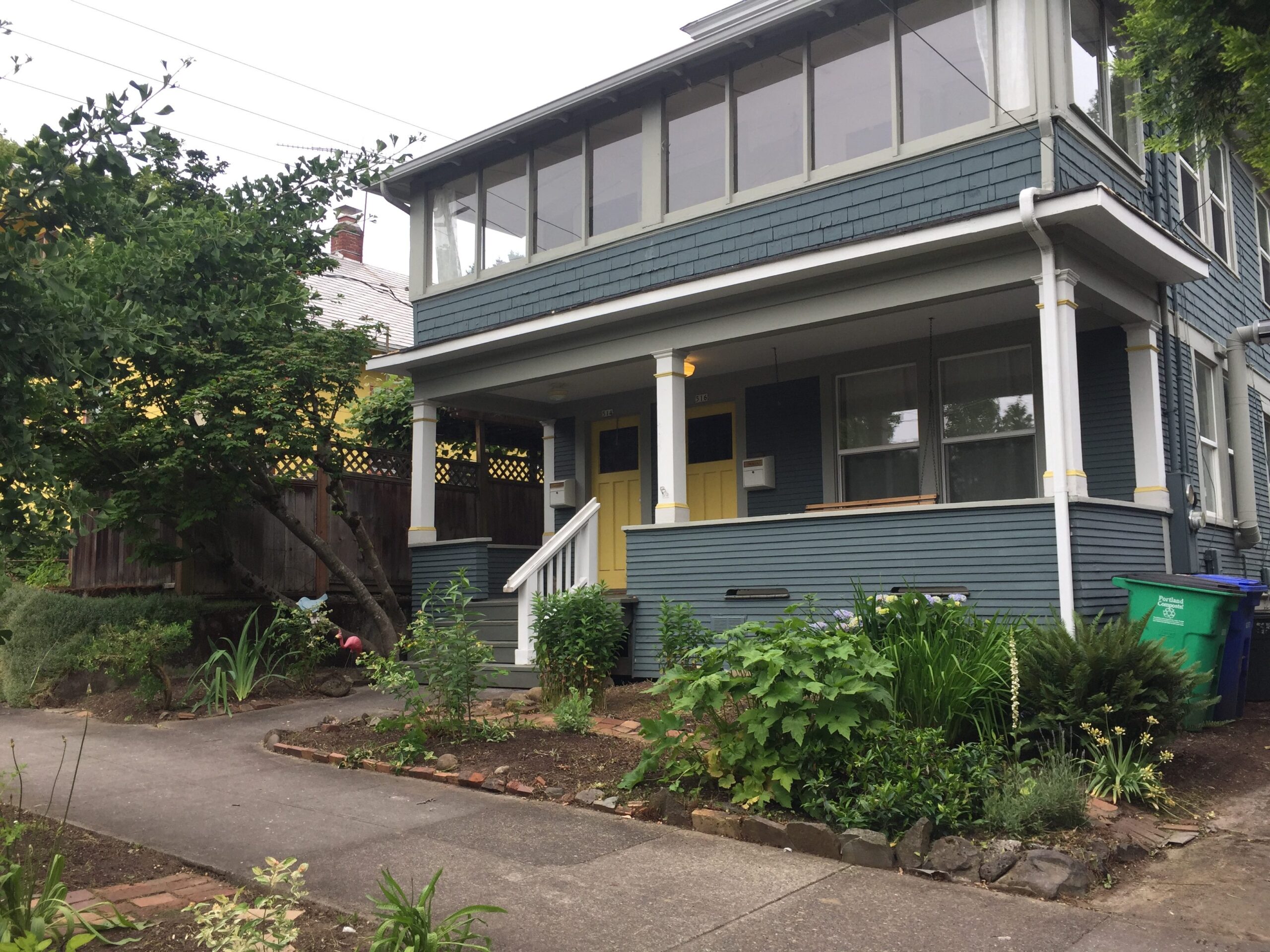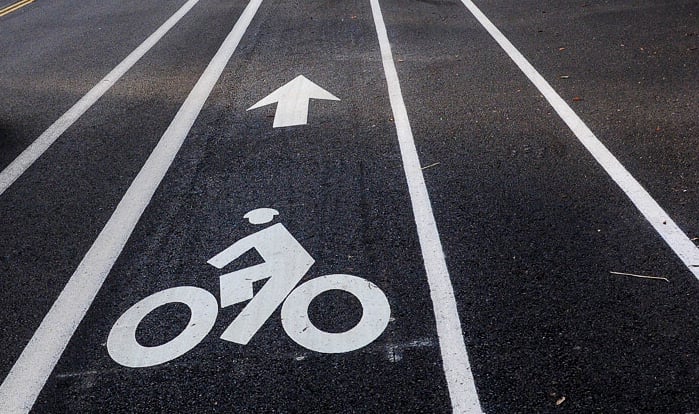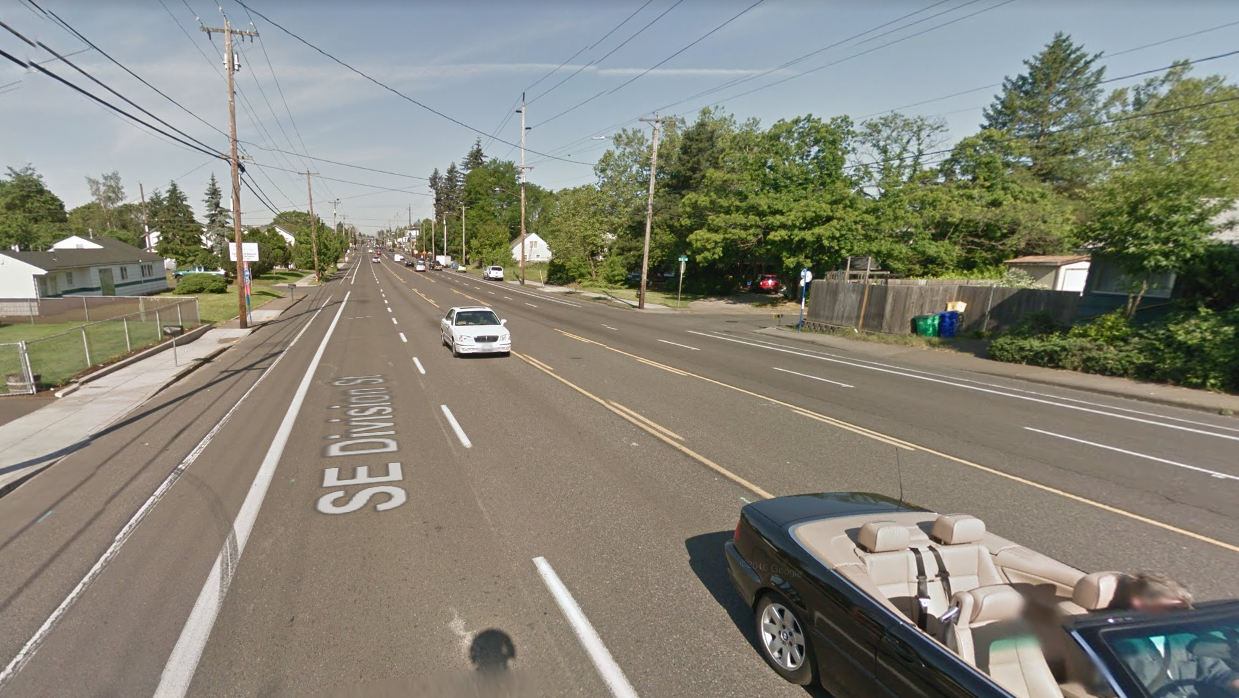Michael Andersen (Contributor)
BikePortland Articles by Michael Andersen (Contributor)
Census: Portland bike commuting laid low again in year before Covid
2019 was another year with little growth in bike commuting, in Portland or elsewhere in the U.S.
Did segregation cause your traffic jam?
Sprawl: Among other things, a deliberate attempt to enforce racial segregation with physical space.
On SW Corridor light rail line, $100 million could go to garages – or to better options
Park-and-rides are a monument to our failure to make transit more attractive than driving.
Oregon’s proposal to lift fourplex bans would be great for biking
Proximity is key to our future.
A little big shift: Portland can restripe 2% of roads for 60% more capacity
The most important biking investment in 20 years.
Bike commute numbers ebb nationwide; in Portland, they’re flat
Here’s what it might mean about the future.
Planning Commission finds ‘missing middle,’ votes for more housing citywide
It’s a big deal for bikeable neighborhoods.
Speak up or sprawl out: “Missing middle” housing proposal hits the planning commission tonight
Legalizing more and cheaper housing in bikeable areas is just as important as improving unbikeable areas.
Beyond freeway expansion, here’s how local streets would change with I-5 Rose Quarter project
The comment deadline is Friday, Oct. 6.
Portland’s BikeCraft fair is back for the 2017 holidays
Vendor applications are due Oct. 15.
TriMet is firming up its designs for outer Division bus stations
Some major bikeway upgrades would be in store.

